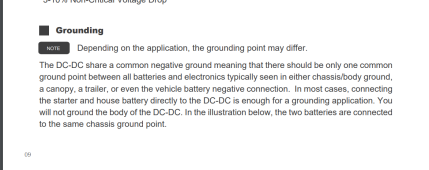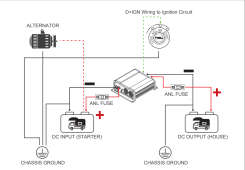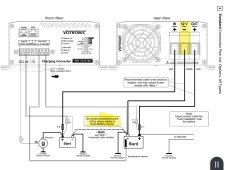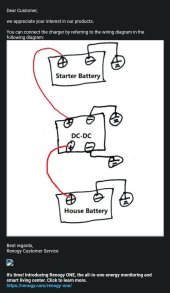I have a Renogy 60A B2B charger to add to my system. It has + and - from the vehicle battery (input), and + and - to the house battery (output).
Since the house system is chassis grounded, both negative wires share a common ground. In that case, can I run a wire from the input negative terminal to the output negative terminal? And then run a single wire from the output negative (sized for the combined load of input and output) to the chassis ground?
Thank you!
Since the house system is chassis grounded, both negative wires share a common ground. In that case, can I run a wire from the input negative terminal to the output negative terminal? And then run a single wire from the output negative (sized for the combined load of input and output) to the chassis ground?
Thank you!






